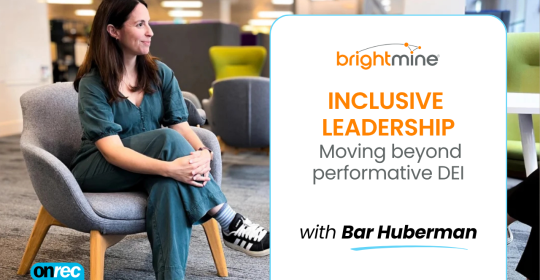Recruiting is evolving with technology at a frenetic pace. The future will be more machine-driven than perhaps ever before in the ever-expanding quest for recruiters who have to ensure they are hiring the best quality candidates.
Together, predictive and prescriptive analytics are the future in helping talent acquisition teams to move forward with confident sourcing, recruiting and hiring decisions. The technology benefits nearly every part of the process.
The need for data-driven evidence has never been more significant – recruitment will always be a battleground but predictive and prescriptive analytics enable organisations to create recruiting decisions that are...
- Data-driven
- Consistent
- Free of inherent biases
- Faster and more efficient
- Based on probabilities/scores like schools attended, grades, work history, etc...
In essence, predictive recruiting scoring & analytics ensures you connect with the right talent, not just the right now talent. Let’s take a look at some clear benefits.
More Efficient
Predictive and prescriptive analytics can quickly identify the applicants or candidates who are more likely to perform well within the role. At a basic level, this obviously means that administrative burden is lowered. Recruiters save time ranking resumes or CVs and pre-screening applicants, creating a limitless capacity to connect with and screen potential candidates.
Predictive recruiting and scoring can also provide insight into the talent pool you already formed, pulling candidates and applicants from the past. This technology is ensuring you are connecting with the right talent, not just the right now talent.
Higher Accuracy
Predictive analytics open a window into the candidate’s skills and fit. Talent acquisition teams can use their predictive recruiting scoring to accurately assess candidates without even glancing at a resume. The technology cuts through the time needed for screenings by comparing applications and shortlisting those candidates who score highest.
Shortlisted candidates are most likely those that competitors want to hire. Predictive analytics pulls those candidates to the top, giving you the competitive advantage in connecting with them quickly. Further, predictive analytics can help recruiters mines their existing talent pool to discover candidates who might have gone unnoticed in a manual or non-intelligent process For instance, algorithms can help recruiters expand beyond longstanding criteria like having attended an Ivy League school, enabling them to find needles in haystacks & diamonds in the rough.
More Engaging
Shortlisted candidates are most likely those that competitors share an interest in hiring. They are qualified and skilled, making them a hot commodity. Predictive analytics pull those candidates to the top, giving you the competitive advantage in connecting with them first. Quicker response rates could mean the difference in a fielded or accepted offer. Additionally, recruiters are less burdened by paperwork and process, providing the opportunity to build connections with their candidates.
The more positive interactions between your company and talent, the better the candidate experience. Even more, predictive and prescriptive analytics means a lowered time to hire and a decreased burden on the team or department with a job opening.
Better hiring decisions & employee performance start with your recruiting tools & strategy!
Improved Diversity
Predictive and prescriptive analytics can measure the percentage of diverse hires, helping organizations overcome tendencies and discrimination. That way they can monitor where marks are missed and where improvements can be made for better diversity strategy success.
The future is here and it’s making hiring a whole lot smarter. With analytics, organisations can improve everything from the candidate experience to overall performance. Are you ready to embrace the future or is further myth busting needed first?







